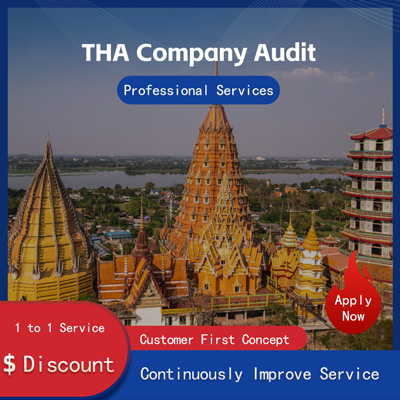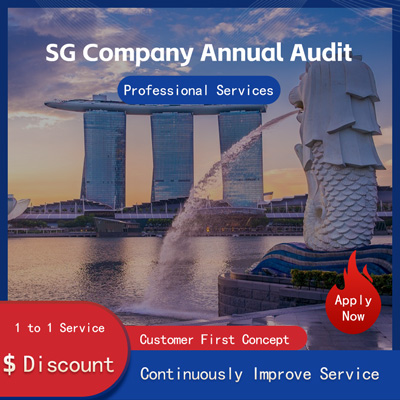
In-Depth Analysis How to Conduct Risk Assessments for U.S. Companies
Depth Analysis How to Conduct Risk Assessments for U.S. Companies
In today’s globalized business environment, companies face a myriad of risks that can impact their operations, financial health, and reputation. For U.S.-based businesses, understanding and managing these risks is crucial to maintaining competitiveness and sustainability. This depth analysis explores the key steps involved in conducting risk assessments for American companies, drawing insights from recent news and industry trends.

Understanding Risk Assessment
Risk assessment is a systematic process designed to identify potential threats and vulnerabilities that could affect a company's ability to achieve its objectives. It involves evaluating both internal and external factors that could lead to adverse outcomes. Internal risks may include operational inefficiencies, employee misconduct, or technological failures, while external risks might encompass economic downturns, regulatory changes, or geopolitical tensions. By identifying these risks early, companies can develop strategies to mitigate them effectively.
Recent reports highlight how even well-established firms are not immune to unforeseen challenges. For instance, a major U.S. retailer recently faced supply chain disruptions due to port congestion and shipping delays caused by global logistics bottlenecks. Such incidents underscore the importance of proactive risk management practices.
Step 1 Identify Potential Risks
The first step in any risk assessment is to identify all possible sources of risk. This requires a comprehensive review of the organization’s operations, including processes, systems, and assets. Companies should also consider external influences such as market conditions, competitive dynamics, and emerging technologies.
A case in point comes from Tesla, which has consistently been at the forefront of innovation but has also encountered supply chain issues. Tesla’s CEO, Elon Musk, has publicly discussed the challenges of securing critical materials like lithium and cobalt, which are essential for battery production. Identifying such dependencies early allows Tesla to explore alternative suppliers or invest in vertical integration strategies.
Step 2 Analyze the Likelihood and Impact
Once risks have been identified, the next step is to analyze their likelihood and potential impact. Not all risks carry the same weight; some may be highly probable but result in minor consequences, whereas others might be rare yet catastrophic. Prioritizing risks based on this analysis helps allocate resources more efficiently.
For example, cybersecurity threats remain a top concern for many U.S. companies. Recent data breaches affecting large tech giants have prompted increased scrutiny over data protection measures. While the probability of a breach may vary depending on an organization’s security protocols, the impact-should it occur-can be severe, involving loss of customer trust, legal liabilities, and significant financial penalties.
Step 3 Develop Mitigation Strategies
After analyzing risks, companies must devise mitigation plans tailored to address each threat. These strategies can range from implementing stricter controls over access to sensitive information to diversifying supplier networks to reduce dependency on single sources. Flexibility and adaptability are critical components of effective risk management.
An illustrative example comes from Amazon, which has expanded its fulfillment centers across multiple regions to minimize delivery delays during peak seasons. This approach reduces reliance on centralized hubs, thereby enhancing resilience against unforeseen disruptions.
Step 4 Monitor and Review Regularly
Risk assessment is not a one-time exercise; it requires continuous monitoring and periodic reviews. Markets evolve rapidly, and new threats can emerge overnight. Therefore, organizations need robust mechanisms to track changes in their risk landscape and adjust their mitigation efforts accordingly.
According to recent studies, companies that adopt dynamic risk management frameworks tend to fare better during crises. They are better equipped to anticipate shifts in consumer behavior, regulatory requirements, and technological advancements. For instance, ride-sharing platforms like Uber and Lyft have adapted quickly to evolving privacy regulations by enhancing user consent mechanisms and improving data encryption standards.
Leveraging Technology for Enhanced Risk Management
Technological advancements have revolutionized risk assessment methodologies. Artificial intelligence AI and machine learning ML tools now enable companies to process vast amounts of data swiftly, detect anomalies, and predict future trends with greater accuracy. Predictive analytics, for instance, allows organizations to simulate various scenarios and assess their implications before they materialize.
A notable application of AI in risk management is seen in the financial sector, where banks use advanced algorithms to detect fraudulent activities in real time. Similarly, insurance companies employ ML models to evaluate claims more accurately and reduce instances of false submissions. These innovations highlight how technology can empower businesses to stay ahead of potential pitfalls.
Conclusion
Conducting thorough risk assessments is vital for U.S. companies seeking long-term success in an increasingly complex world. By following a structured approach that includes identification, analysis, mitigation, and ongoing monitoring, organizations can build resilient infrastructures capable of weathering storms. As demonstrated through numerous examples from leading corporations, embracing technological solutions further amplifies the effectiveness of risk management initiatives.
Ultimately, the goal of risk assessment is not merely to avoid losses but to create opportunities for growth and innovation. Companies that proactively manage their risks stand to gain a competitive edge, fostering stability and sustainability amidst uncertainty. In a rapidly changing business environment, mastering the art of risk assessment is no longer optional-it is essential.
Helpful (0)
No help (0)
Still have questions after reading? More than 98,000 users have contacted us. Please fill in the following information to obtain business information.

Service Scope
MoreRecommended for You
- Understanding Singapore Offshore Accounts Making Global Money Transfers Easier
- How Much Does It Cost to Register a Company in Singapore? A Clear Breakdown of Fees to Save You Time and Money
- Registering a Company in Singapore Isn't That Hard-Read This and You'll Get the Whole Picture!
- How to Start a Company in Singapore? A Step-by-Step Guide to Help You Launch Your Business Smoothly
- Singapore vs. Hong Kong Bank Accounts Which One’s Better for Managing Your Money? Here’s How to Decide
- Skip Tax Filing in Singapore? Smartly Leverage Hong Kong Policies to Achieve Financial Freedom
- A Complete Guide to Opening a Corporate Bank Account in Singapore - All Key Details Explained in One Article
- How Much Does Audit and Tax Filing Cost for a Singapore Company? Everything You Need to Know in One Article
- Step-by-Step Guide to Registering a Company in Singapore - Kickstart Your Entrepreneurial Journey with Ease
- Thinking of starting a company in Singapore? Here’s what you need to know about the registration process and key things to watch out for!
- Starting a Company in Singapore Is Easier Than You Think! A Step-by-Step Guide from Registration to Launch, and How to Seize Your Next Big Entrepreneurial Opportunity
- What Special Procedures Do You Need to Open a Company in Singapore? This Practical Guide Will Get You Started Smoothly!
- Do Singapore Companies Really Need Annual Audits? Here’s Why They Matter and How They Affect Your Business
- Complete Guide to Singapore Company Annual Filing A Must-Read Handbook for Business Owners
- How to Start a Company in Singapore A Step-by-Step Guide to the Process and Benefits
- How to Register a U.S. Business for Your Singapore Company? A Step-by-Step Guide to Master the Entire Process
- Dollar NRA Accounts Unlocking New Opportunities in Wealth Management - Have You Tried One Yet?
- Under a VIE structure, how do domestic shareholders pay income tax? Here are the key issues you need to understand
- Step-by-Step Guide to Easily Register a Company in Singapore - Key Steps Fully Explained!
- Step-by-Step Guide to Registering a Company in Singapore and Easily Unlocking Global Markets


 ONE
ONE








Customer Reviews
Small *** Table
December 12, 2024The experience was very good. I was still struggling to compare it with other companies. I went to the site a few days ago and wanted to implement it as soon as possible. I didn't expect that everything exceeded my expectations. The company is very large, with several hundred square meters. The employees are also dedicated and responsible. There is also a wall of certificates. I placed an order on the spot. It turned out that I did not make a wrong choice. The company's service attitude is very good and professional. The person who contacted me explained various things in detail in advance. After placing the order, the follow-up was also very timely, and they took the initiative to report the progress to me. In short, I am very satisfied and recommend this company!
Lin *** e
December 18, 2024When I first consulted customer service, they recommended an agent to me. They were very professional and patient and provided excellent service. They answered my questions as they came in. This 2-to-1 service model is very thoughtful. I had a lot of questions that I didn’t understand, and it’s not easy to register a company in Hong Kong. Fortunately, I have you.
t *** 7
December 19, 2024I originally thought that they only did mainland business, but I didn’t expect that they had been doing Hong Kong business and were doing very well. After the on-site interview, I decided to ask them to arrange the registration of my Hong Kong company. They helped me complete it very quickly and provided all the necessary information. The efficiency was awesome. It turns out that professional things should be done by professionals.👍
b *** 5
December 16, 2024In order to register a company in Hong Kong, I compared many platforms and stores and finally chose this store. The merchant said that they have been operating offline for more than 10 years and are indeed an old team of corporate services. The efficiency is first-class, and the customer service is also very professional.